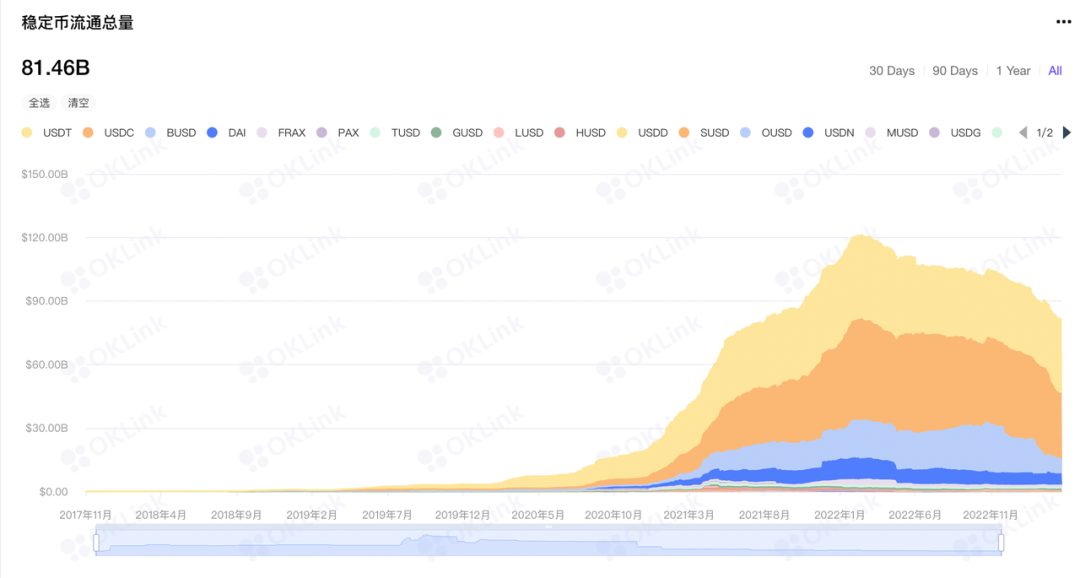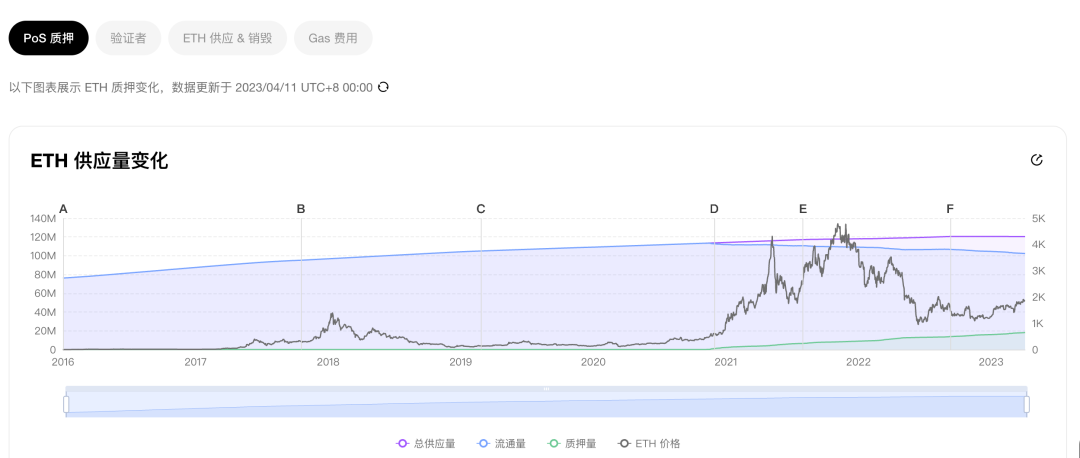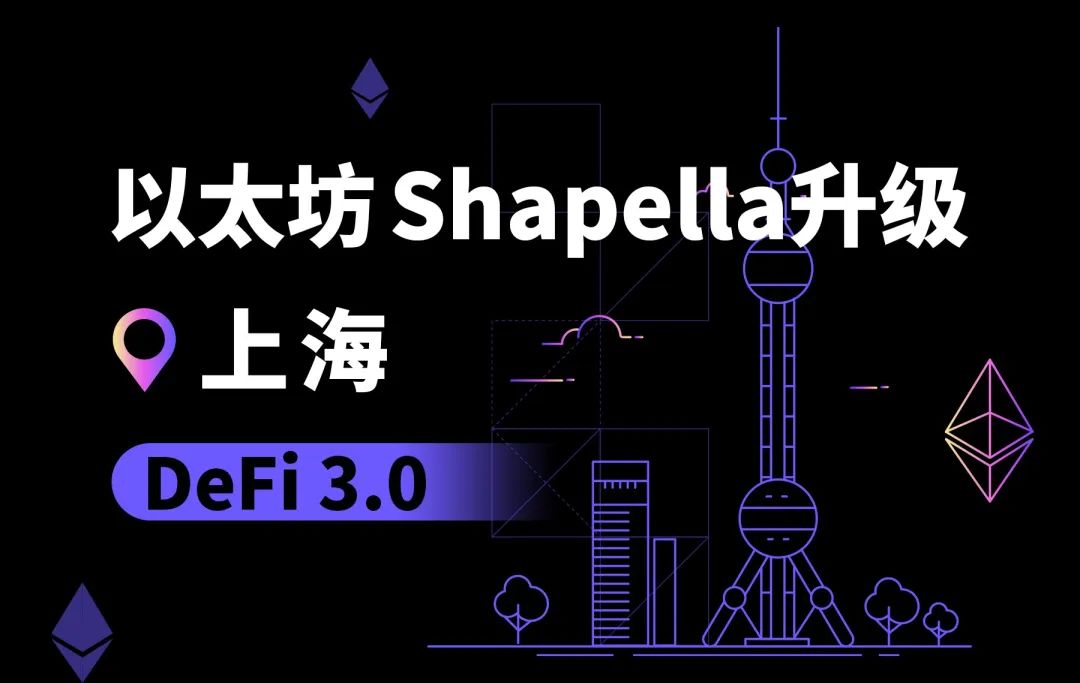Original source: Okey Cloud Chain Research Institute
Original Author: Bi Lianghuan
introduction
Original source: Okey Cloud Chain Research Institute
Original Author: Bi Lianghuan
first level title
There is only one day left until the Ethereum Shapella upgrade (also known as the Shanghai upgrade)!
Since Ethereum went online in 2015, it has become the world's second-ranked encrypted virtual asset. The significance of Ethereum's birth in the industry is that it allows developers to build smart contracts and decentralized applications (DApps) without trusting any intermediaries or Third-party organizations, which also makes Ethereum one of the important infrastructures of Web 3.0. After repeated upgrades of Ethereum, the ecology of Ethereum is constantly expanding and improving. Among them, the Shapella upgrade planned to be implemented on April 13 is the fifth important upgrade of Ethereum, and it is also the first upgrade after the merger of Ethereum. Okey Cloud Chain Research Institute will analyze the impact of the Ethereum Shapella upgrade on DeFi and look forward to the future.
Ethereum is the "engine" of the DeFi revolution. Says Kyle Samani, founder of Multicoin Capital.

The development of DeFi
At present, DeFi has become a huge market with a market value of 60 billion US dollars. Not only its market size is large, but also its development speed is very rapid. According to data from OKLink, as one of the application scenarios of DeFi, the total circulation of stablecoins has increased by 12.3 times in three years from April 2020 to April 2023. In addition, the total loan volume of lending agreements like DeFi's top application Aave has grown from US$100 million in 2020 to more than US$5.72 billion now.
Ethereum Shanghai upgrade, the prologue of DeFi 3.0
image description
From the 1.0 era to the 3.0 era, DeFi has experienced technological innovation and market enthusiasm, and now it has come to application innovation and exploration.

So what exactly is DeFi 3.0?
It is another layer of innovation based on DeFi 2.0. Although the industry’s definition of DeFi 3.0 is still being explored. But in general, DeFi 3.0 focuses on the concept of "Farming as a service", through the deep integration of financial services and applications, to achieve more inclusive and convenient financial services. At present, the concept of DeFi 3.0 is trying to solve two problems: one is the problem of sustainable income. DeFi 2.0 independently controls liquidity through the agreement to ensure the stability of liquidity, but at the same time it also brings about the problem of sustainable income; the second is the problem of cumbersome operations and high gas fees. With the development of DeFi 2.0, the entire DeFi ecosystem has become extremely complex. Investors need to pay close attention to industry trends and frequently transfer funds between various public chains in order to obtain the best returns. For newcomers to DeFi for the first time, these cumbersome operations and increasingly high gas fees may discourage them.
Source: Knower, An argument for DeFi 3.0
first level title
Why is the Ethereum Shapella upgrade important to the future development of DeFi?
Ethereum is one of the main infrastructures in the DeFi ecosystem. According to incomplete statistics from Okey Cloud Chain Research Institute, about 60% of DeFi’s total locked value (TVL) is built on Ethereum. Ethereum is also the birthplace of DeFi innovation, and many DeFi innovations originate from the Ethereum ecosystem. However, in the early stage of the development of Ethereum, the slow transaction speed and high transaction fees restricted the development of DeFi, especially in the stage of rapid development of DeFi, this problem is more obvious. In order to continuously optimize and improve Ethereum, similar to the upgrade of the mobile phone system we use, the upgrade of Ethereum becomes necessary. These upgrades, including the Shapella upgrade, will continue to promote the development of DeFi and are expected to open the prelude to the DeFi 3.0 era.
secondary title
Every upgrade of Ethereum is dedicated to pushing Ethereum one step closer to the "world computer". As one of the main infrastructures of DeFi, Ethereum is also breaking the bottleneck of DeFi through continuous technological upgrades, and is expected to usher in the era of DeFi 3.0.

The upcoming Ethereum Shapella upgrade on April 13, 2023 includes the Shanghai upgrade of the execution layer and the Capella upgrade of the consensus layer. This upgrade will solve three key issues of the Ethereum network: simplifying the execution engine of the Ethereum Virtual Machine (EVM), improving the redemption flexibility of pledged ETH, and reducing the Gas fee of Layer 2. This upgrade mainly covers five Ethereum Improvement Proposals (EIP): EIP-4895, EIP-3860, EIP-3651, EIP-3855, and EIP-6049. These agreements mainly involve the following aspects: Increase the flexibility of redemption of pledged ETH Responsibility, expanding the code capacity of smart contracts to reduce Gas consumption, introducing the first block transaction reward mechanism, reducing meaningless Gas consumption, and avoiding unexpected results caused by misoperation or malicious attacks. Overall, the main technical content of the Shapella upgrade is to enhance the redemption mechanism for pledged ETH.
The content of the "redemption mechanism" in this upgrade will stimulate more validators to participate, and promote the further decentralization of the Ethereum network and improve network security. Since Ethereum PoS went live, stakers have had to stake their funds. Through this upgraded "redemption mechanism", the full operation of the PoS blockchain can become a reality. This means stakers can finally have control of their personal funds.
In Ethereum governance, stakers play an important role, influencing the future direction of Ethereum through voting, and jointly building and protecting the security and credibility of the Ethereum blockchain. They can delegate the operation of running validators to a third party, but the onus remains on choosing the right partners to maintain the characteristics of Ethereum. Every member of the Ethereum community participates in the governance process, and the role of stakers is particularly important. By increasing the portability of staking, withdrawals will lead to increased competition among staking providers, unlocking liquid value in Ethereum is also likely to drive network growth and global adoption.
image description
Figure ETH supply changes, source: OKLink

The content proposal improvements included in the Shapella upgrade could help drive the development of Layer 2, a scaling technology on Ethereum, making transactions faster and cheaper. The Layer 2 solution is to transfer transactions from the main chain to side chains or other solutions, thereby increasing transaction speed and reducing costs. Some of the most promising Layer 2 projects right now include Optimism, Arbitrum, zkSync, and StarkNet.
But the real breakthrough of Layer 2 may have to wait for the next major upgrade-Cancun upgrade. EIP-4844 is the first EIP to be written into the specification after the Capella upgrade in the Shapella upgrade. Layer 2 needs to use the Call Data published on Layer 1, which is crucial to the security mechanism of Layer 2. However, the cost of publishing Call Data on Layer 1 is currently very high, accounting for more than 80% of Layer 2 transaction fees. Therefore, in order to reduce costs, more data space needs to be created on Ethereum Layer 1. EIP-4844 focuses on solving this problem, thereby reducing Layer 2 transaction fees, providing support for future data sharding applications, and introducing a multi-dimensional charging market mechanism that separates the usage and charging of different types of resources. With the implementation of EIP-4844, Layer 2 will become more competitive, offering greater potential for future development.
Ethereum Shanghai upgrade, the prologue of DeFi 3.0
With the increase of DeFi applications, the transaction volume and load of the blockchain network will become larger. Therefore, the Layer 2 solution is a technology that solves the problem of blockchain transaction speed and expansion, and is one of the technologies necessary for the development of DeFi. Looking ahead, DeFi 3.0 may require more technical support to meet the challenges of DeFi development, such as secure protocols, sustainable models, efficient transaction processing, strong privacy protection, and better interoperability. In addition, with the continuous evolution of blockchain technology, DeFi 3.0 may also face new technical challenges and opportunities.
first level title
Summary and Future Outlook
Since Ethereum is the main infrastructure of DeFi, the upcoming Shapella upgrade is of great significance to the development of DeFi. Especially with the continuous development of DeFi, the DeFi 3.0 era will require the support of underlying technology. As the innovation ground of DeFi, Ethereum’s continuous technical upgrades will also help open the DeFi 3.0 era.With the continuous upgrading of Ethereum, the performance of the entire public chain infrastructure will also be improved, which has aroused attention to the future development of DeFi. However, with the continuous expansion of the DeFi industry, technical bottlenecks have gradually become prominent. Therefore, building better infrastructure, such as Web3 wallets, to meet users' needs for digital asset management has become the focus of attention. Web3 Wallet is an important tool for connecting users and decentralized applications (DApps), providing a secure and easy-to-use way to manage digital assets. In addition, the upgrade of Ethereum is also expected to promote the deep integration of DeFi and other fields (such as NFT, cross-chain solutions), and expand the application scenarios and market size of DeFi.
References:
1、“Current Ethereum”,Luozhu
Although Vitalik Buterin once said that Ethereum has only completed 55% after the merger, as the continuous upgrading of technology drives the development of the DeFi industry and thus increases the demand for infrastructure, the DeFi industry will continue to usher in new opportunities and opportunities. Challenges have become an important part of the future development of the financial field.
3、“An argument for DeFi 3.0 ”,Knower
Want to see Ethereum Shapella upgrade the data on the chain, more exciting please



